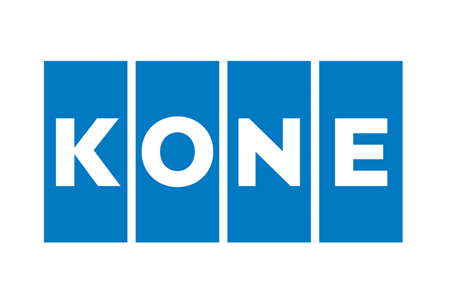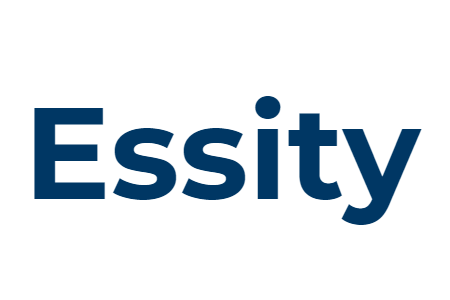Organizational Culture
Organizational Culture and Leadership Go Hand-in-Hand
Want better business results? Start with organizational culture transformation.
You’ve got a strong strategy and talented people. But if you’re not seeing results, then you don’t have a business problem, you have a culture problem. And that’s bad for your bottom line.
It’s easy to revise an org chart. But changing mindsets and behaviors — in other words, changing organizational culture — is much tougher.
Culture is what makes strategy happen. That’s why your organizational culture should be carefully aligned and cultivated to support your business strategy.
Culture isn’t an accident. It’s forged collectively and must be shaped intentionally. But organizational culture transformation means scaling human behavior change, and that’s a complex process.
And when the strategy changes, organizational culture change must happen, too. Because in the end, it’s not about what culture you want, it’s about what culture your strategy demands. You can propel a true transformation through stronger organizational culture and leadership. We know, because we’ve been helping clients strengthen and align their cultures for over 50 years.
Our Solutions for Organizational Culture & Leadership
Culture is what makes your business strategy come to life — and it looks different for every organization.
Partner with our dedicated experts who specialize in changing organizational culture. With decades of experience understanding how strategy, talent, and culture are linked, we can partner with you to create a custom organizational leadership culture solution that’s tailored to your organization’s unique challenges, context, and needs. And we can help you align them all for maximum impact and measurable, sustainable results.
- White-glove service in partnership with your senior executive team
- Fully customizable, with long-lasting impact
The conversations your people have every day reflect your culture. Improve the quality of conversations, and you’ll be changing organizational culture for the better — improving candor, increasing engagement, and building better business outcomes.
Better Conversations Every Day™ is our proven coaching skills program that equips people to give and receive feedback well and work toward meaningful, constructive outcomes. It can help strengthen the fabric of your entire organization through building a coaching culture of feedback.
- Multiple modalities available; select what’s right for your organization
Changing organizational culture to show greater support for equity, diversity, and inclusion (EDI) can be transformational for your business. We can partner with you to understand your particular organizational context and identify specific actions to take to drive real results.
Powered by decades of global research and in-the-field experience, our custom EDI solutions can help you with organizational culture transformation and equip your leaders to work together more effectively. Let us craft an initiative that builds greater equity, diversity, and inclusion for your organization.
- Create lasting change by aligning beliefs with behaviors
What Our Clients Are Saying
We measure success by lives touched and impact made. That’s why the organizations we work with and the leaders we empower consistently tell us the same thing: their experience with us is a game-changer. We’ve helped clients around the globe change strengthen their organizational culture and leadership, improving their business performance as a result.
But don’t just take our word for it — take theirs.
“The leadership culture at KONE is absolutely changing as a result of our work with CCL… We have worked together to develop, explore, and invent the approach that made the most sense… We’ve co-developed a process and the thinking behind creating a leadership culture that fits our business.”

Vance Tang
CEO
KONE Manufacturing
“New beliefs gave us the possibility of having a common ground where we could start to talk and start to see ‘How are we fitting together?’…It’s easy to connect the beliefs and behaviors to our daily reality.”

Massimo Minaudo
Country Manager, Italy
Essity
Why Organizational Culture & Leadership Are Linked
Cultivating an effective organizational culture is vital because it helps align teams and supports your business strategy. If organizational culture and leadership aren’t on the same page, people are at risk of operating on outdated mindsets, beliefs, and behaviors, which can affect everyone — from C-suite executives to frontline workers.
At a high level, cultural norms can permeate an organization and lead to good or bad outcomes. For example, if an organization’s leaders micromanage, other team members may adopt the same approach with their direct reports.
On the other hand, in a collaborative organizational culture that favors candid conversations, active listening, constructive feedback, and support, employees are more likely to adopt the same attitudes.
Simply put, organizational culture and leadership are closely tied and influence each other in more ways than one. To evaluate and ignite organizational culture transformation, it’s important to define a clear landscape for success and leverage connected, aligned leadership across the org chart. Once these actions are taken, you’ll be changing organizational culture for the better.
Let’s Talk About What Organizational Culture Transformation Looks Like for You
Our experts are here to help. Get in touch with us about your organizational culture and leadership development needs. We’d love to hear from you!
Organizational Culture and Leadership: Research & Resources
Culture change work isn’t easy or quick, but it’s essential in order to adapt for the future. The key to successfully transforming your organization is to actively build collective capability for new ways of working together.
Learn how your organization can increase the maturity of its organizational culture to become an example of interdependent leadership, over these 4 broad and reinforcing phases.
If culture aligns with strategy, your organization is more likely to achieve success. Here’s how leaders can contribute to shaping organizational culture.
Sustainable workplace culture change towards greater equity, diversity, and inclusion (EDI) requires a serious commitment across all levels of an organization. Learn how to take a systemic approach to EDI.
Are unexamined norms stifling your organization’s efforts to change workplace culture? Download our playbook to discover 3 common beliefs that must be unlearned first for success.
More About Organizational Culture Transformation
Can You Successfully Pull Off Changing Organizational Culture? Absolutely.
Do you have the culture your strategy demands?
It all starts with awareness. An organization — much like the people that comprise it — can’t change unless its leaders recognize the need. How mature is your organization’s culture and leadership?
For changing organizational culture successfully, you must intentionally build capabilities for new ways of working. Consider how daily conversations affect your organizational culture. Are people able to break through internal barriers, bridge silos, and successfully collaborate across boundaries?


We Can Help You Achieve Organizational Culture Transformation
Organizational culture and leadership are inextricably linked, and we believe in a transparent process of co-creation built on trust. We can partner with you to determine whether you have the right culture for your strategy; develop the beliefs and behaviors you need to support changing your organizational culture; and measure your progress and sustain change.
Whether you’re looking for a customized, top-to-bottom solution to transform your organization starting with the senior team, build support for equity, diversity, and inclusion, or scale culture change through the fabric of people’s conversations, we’re with you every step of the way. We offer a variety of research-based organizational culture and leadership solutions for every budget, available both virtually and in-person.
Related to Changing Organizational Culture
Get Our Latest Updates
Subscribe to our email newsletters that highlight our latest research-based articles, products, programs, and more to help you strengthen your leadership skills.






